|
Growing cucumbers through seedlings is not the most popular method, although it is increasingly beginning to be used by summer residents. |
Classification of cucumbers
According to the method of pollination, cucumbers are:
- Parthenocarpic. The greens set without pollination; the fruits have no seeds.
- Self-pollinating. The flowers are pollinated by their own pollen and the fruits contain seeds.
- Bee pollinated. Pollinated by insects. When pollen gets on the pistil, pollination does not occur. The pollen must be from another plant.
|
Bee-pollinated cucumbers |
By growing method:
- For open ground. Varieties and hybrids are grown that are resistant to cool weather. Both parthenocarpic and bee-pollinated varieties are grown in open ground, but they cannot be planted together, since cross-pollination produces ugly and unsuitable fruits. For planting in open ground, varieties with weak and limited branching are more suitable.
- For protected ground Cucumbers of all types of pollination, with medium and strong branching, are suitable. You can grow cucumbers with weak branching, but long-climbing ones.
By purpose:
- Salad cucumbers grow long (up to 20 cm or more) and have thick skin. They are not suitable for pickling, although they are sometimes used for preparing lightly salted products. Currently, varieties of salad cucumbers 15-20 cm long have been obtained, but they have thick skin and are not suitable for preservation.
- Salting. The greens are medium-sized with thin, delicate skin, which allows the brine to penetrate inside faster. However, many varieties outgrow and lose their quality. Overgrown cucumbers are only suitable for fresh consumption.
- Universal. Can be used fresh and for preservation.Now there are a sufficient number of varieties and hybrids of this species, but many of them have lower yields than salad and pickling varieties.
By type of growth:
- Bush form spreading neat bushes, the lashes reach 50 cm in length. This species does not form lateral lashes, and the internodes are shorter than in other species. Bush cucumbers bear fruit very quickly: the crop is harvested within 3 weeks from the moment the first greens appear, after which the bushes are thrown away because they no longer bear fruit.
- Short-stemmed They are very similar to bush cucumbers, only their vines are longer - up to 80 cm. These cucumbers, unlike bush cucumbers, are weakly branched: on the 1st order lashes no more than 2 short second order lashes are formed. These side lashes, as a rule, are no longer than 30-50 cm. The return of the greens, like that of the bush species, is friendly and fast. 25-30 days after the start of fruiting, the plants fully produce the entire harvest. Both bush and short-stemmed cucumbers are grown in open ground.
- Medium-climbing. They form long lashes up to 1.5-2 m long. They branch actively. The plant consists of lashes of 2-4 orders. They begin to bear fruit later; it is spread out over time.
- Long-climbing. Scourges up to 3 m long, stems of 3-6 orders, not inferior in length to the stem of the first order. Shoots grow from almost every node of the first order stem. Suitable for both open ground and greenhouses. The stronger the branching of the plants, the longer the fruiting. When the main stem yields its harvest, the side shoots will actively begin to grow and produce greenery. It is better to grow on a trellis. The harvest is delivered within 1.5-2 months.
By size of greens:
- Pikuli - these are very small cucumbers, similar to the ovary, but not like a formed cucumber. Their length is no more than 3-5 cm.Currently, quite a lot of varieties have been bred. Pickles are used only for pickling. They have not yet become widespread among amateurs.
- Gherkins - small cucumbers with thin, delicate skin. The fruits do not grow more than 6-10 cm. Intended for pickling.
- Short. Cucumbers are 11-17 cm. As they ripen, they begin to grow more in width than in length. An overripe cucumber is shaped like a barrel.
- Long-fruited. These are usually salad-type varieties. Zelentsy are long - 18-25 cm. They do not outgrow for a long time.
By type of flowering and fruiting:
- Bouquet or bunch.
There are no varieties among this group; all bunch cucumbers are hybrids. From 3 to 8 flowers appear at the nodes and the same number of ovaries are formed simultaneously. These cucumbers require painstaking care, otherwise there will be no return from them.
- Regular. Flowers and greens are arranged 1-2 along the entire length of the stem.
By fruiting time:
- Early. Fruiting is short 2-3 weeks. Begins 35-40 days after emergence. There are also ultra-early cucumbers that begin to yield in 30-35 days.
- Mid-season. They begin to bear fruit after 45 days. The harvest takes longer than earlier ones: within 30-40 days.
- Late. Fruiting begins 50 days after germination. They are distinguished by an extended fruiting period (greens appear in 1.5-2 months). Late cucumbers are most resistant to disease.
In the middle zone and to the north, the start of fruiting is 5-7 days longer.
How to choose varieties for planting seedlings?
Cucumbers, like other agricultural crops, are divided into varieties and hybrids. If the bag has the designation F1 after the name, it means it is a hybrid.
Cucumber hybrids are superior to cucumber varieties in all qualities; they can be preferred to varietal analogues even in the northern regions.
- Hybrids, unless specifically indicated on the package, can be grow indoors, and in open ground.
- They are much more resistant to adverse factors and diseases.
- The taste is not inferior to the varieties (unlike hybrids of tomatoes and peppers, which have a mediocre taste).
- Friendly fruiting.
Having a significant advantage over varieties, hybrids are more expensive. It is impossible to collect seeds from them, so you have to purchase new ones every year.
When growing cucumbers, you need to buy only varieties and hybrids that are zoned for the region. When planting varieties not intended for a given region, you may not get a harvest at all.
If the goal is to get greens all summer, then varieties of different ripening periods and at different times are planted.
Cucumbers with moderate and weak branching are suitable for the northern regions of the country. Strongly branching plants will not have time to form and produce a harvest in the short northern summer.
In the middle zone, cucumbers with moderate and medium branching grow well. Medium-branching plants produce the main harvest in mid-August, weakly branching plants - at the end of July.
In the southern regions, plants suffer greatly from the heat. Under these conditions, weakly branching varieties and hybrids finish bearing fruit faster. Therefore, varieties with strong branching are most suitable for southern Russia.
Biological features of culture
Cucumbers are grown in seedlings only in regions with a cold climate, where frosts can still occur in June, as well as by those who want to get an unseasonably early harvest of greens.
|
The root system of seedlings is very delicate and easily damaged |
The crop has a very weak root system, which practically cannot be restored if damaged. When seeds germinate, a root is formed, which is gradually overgrown with sucking roots. If the sucking hairs break off during transplantation or loosening, they are no longer restored on this root. The plant sprouts a new root, which is again overgrown with sucking hairs.
Therefore, with the slightest damage to the root system, especially at an older age, cucumbers most often die.
Basic rules for growing cucumber seedlings
Planting cucumbers for seedlings is carried out 30-35 days before planting in the ground. Seedlings can only be grown in special containers, from which they can be transplanted into the ground without damaging the roots.
You cannot plant cucumber seedlings directly into the ground, since replanting will inevitably damage the roots and cause the plants to die.
Planting of seedlings is carried out: in the southern regions in mid-late April, in the northern regions - in mid-May. But to get an early harvest or if the crop will be grown on the balcony, sowing is carried out 2 weeks earlier.
|
The most suitable option would be to plant seedlings in peat blocks or peat pots, from which there is no need to replant the crop. The pots themselves dissolve in the soil, and the roots continue to develop without damage. |
You can make cylinders from newspaper for seedlings. Newsprint in the soil gets wet quickly and roots grow through it easily. To make a cylinder, newspaper folded in half is wrapped several times around the bottle. The edges of the cylinder are glued or secured with paper clips. The finished container is removed from the bottle, filled with soil and placed on a pallet.
|
The cylinders do not have a bottom, so when planted in the ground, plants take root easily. |
Preparing the soil for planting seedlings
Plants need fertile soil with a slightly acidic or alkaline reaction (pH 5.5-6.5). The soil mixture should be rich in organic matter, loose and have high absorption capacity.
If you have already grown cabbage seedlings at home and have soil left over, then it is also suitable for cucumber seedlings. But before planting the crop, it is checked for the reaction of the environment: if the pH is 6.6-7.5, then the soil mixture is slightly alkalized by watering it with a weak solution of potassium permanganate, or adding peat to it.
|
Cucumbers grow well on peat soils, so a purchased peat soil mixture is ideal for planting seedlings. There is no need to fill it with fertilizers, since everything necessary has already been added there. |
To independently prepare the soil mixture, take 50% peat and 50% garden soil. If the mixture is acidic, then add ash or chalk in a 0.5 liter jar per 1 kg of soil. Fertilizers must be added to such a soil mixture:
- urea 2 tbsp/kg;
- granulated superphosphate 1 tbsp. l./kg;
- potassium sulfate or potassium magnesium 3 tbsp/kg.
You can use a complete complex fertilizer (3 tbsp/kg) or a special one for cucumbers (Kristalon cucumber) 2 tsp/kg.
Another soil option: humus-peat-old sawdust or river sand in a ratio of 3:3:1. Fresh sawdust is not used because it greatly absorbs soil nitrogen and contains resinous substances that have a bad effect on the growth of seedlings. To add fresh sawdust to the soil mixture, they are doused with boiling water at least 5 times to volatilize the resins.
Any soil mixture must be disinfected. The purchased soil is watered with a warm saturated solution of potassium permanganate, covered with film and exposed to the sun for 4-6 days. You can spill it with Fitosporin solution and also expose it to the sun.
Before adding fertilizers, the self-prepared soil mixture is calcined for 20-30 minutes in an oven heated to 70-90°C. Only after this the soil is filled with fertilizers.
The soil must be warmed up before planting. If it is not possible to warm the soil mixture in the sun, then boxes with soil are placed on radiators or next to the stove. If the soil is cold (below 17°C), the seedlings will be rare and weak, or the plants will not sprout at all.
Preparing seeds for sowing
Before sowing seeds, they must be treated. Preparation includes:
- warming up;
- pickling;
- treatment with growth stimulants;
- soak.
Warming up. Cucumber varieties have a significant feature: they produce predominantly male flowers on the main vine. To stimulate the appearance of female flowers, the seeds are heated before sowing by keeping them in a thermos with hot water (55°C) for 15-20 minutes. You can warm the seeds by hanging a bag with them over the stove for 3-4 days.
|
You can hang the bag on the battery for 6-10 days. This technique significantly increases the formation of female flowers. |
Hybrids have a predominantly female type of flowering, so they do not need to be warmed up. Information about the predominance of female flowers is indicated on the seed packets.
Etching carried out to protect seedlings from black leg and root rot during the initial period of growth. The seeds are soaked in a pink solution of potassium permanganate for 30 minutes. Pickling can be combined with heating in a thermos.
Treatment with growth stimulants usually carried out if the seeds are old (2-3 years old). 1-2 drops of Zircon or Epin are diluted in 1/4 cup of water and the seeds are left for 1-2 hours. After this they are dried.Can be used as a growth stimulant aloe juice, soaking the seeds in it for 24 hours.
Only old seeds are treated with growth stimulants. Fresh and processed by the manufacturer do not need processing.
Soak carried out for speedy seed germination. The seed material is wrapped in gauze, filled with warm water at a temperature of at least 20°C so that it is completely covered with water, covered with film and placed on a radiator.
As soon as the seeds hatch, they are sown.
Sowing cucumbers and timing of seed germination
Planting cucumber seeds is carried out only in heated soil. The ground is pre-watered with settled water at room temperature. 2-3 seeds are planted in each pot to a depth of 1.5-2 cm. The seeds are covered with damp soil. After sowing, do not water the soil, otherwise the seeds will go deep and will not germinate. The pots are covered with film and placed in a warm place.
|
To obtain a harvest all summer long, planting cucumber seedlings can be done in 2-3 steps with an interval of 5-7 days between them. |
When sown in warm soil, cucumbers at home germinate very quickly.
- At a soil temperature of 25-27°C, seedlings appear on the 3-4th day.
- At a soil temperature of 20-25°C - after 5-8 days.
- If the soil is cold - 17-19 ° C, then seedlings will appear no earlier than after 10 days.
- At temperatures below 17°C, cucumbers will not sprout.
Caring for cucumber seedlings
Growing cucumber seedlings in an apartment is not difficult. It grows at home for a very short time: only 10-15 days. With proper care, after 7 days the plants will have their first true leaf, and after another 7 days, the second. At the age of 1-2 true leaves, the seedlings are planted in a permanent place.
Cucumber seedlings on windowsills are often stretched out due to lack of light and high temperature.
Temperature
Immediately after emergence, the film is removed from the pots and the plants are placed in a warm, bright place. Cucumbers, especially at the seedling stage, do not tolerate cold growing conditions and sharp fluctuations in day and night temperatures very well. It is better not to place seedlings in the kitchen, since there are very strong temperature changes between night and day.
Seedlings for indoor soil are kept at a temperature above 21°C, and plants intended for growing outdoors are kept at a temperature not lower than 19°C.
If cucumbers are too cold, they will stop growing. Sometimes seedlings remain in the cotyledon leaf stage for a long time.
Light
Cucumbers are light-loving, but can also be kept in slight shade. If there is no other way out, cucumber seedlings can also be grown on a north window by placing foil or a mirror behind it. In April-May, daylight hours are long and there is no need for additional lighting. And only if the room is gloomy and there is no sunlight at all, the plants are illuminated for 4-6 hours a day.
Humidity
Cucumber seedlings love humid air (85-90%). If the air is too dry, crop growth slows down. To increase humidity, plants are sprayed, and jars of water are placed next to the seedlings.
Watering
The soil must be kept moist. This crop is very demanding of moisture and does not tolerate drying out of the soil, especially during the seedling period, when the root system is very weak.
|
Watering is carried out once every 2-3 days as the soil dries out. Overmoistening the earthen ball is just as harmful to seedlings as drying it out. |
But if cucumbers are grown on peat soil, then the seedlings are watered more often, since peat quickly absorbs water. Watering seedlings is a very subjective matter. Always focus on the degree of dryness of the soil.
Watering is always carried out with warm, settled water. Cold water is unacceptable for plants. It inhibits the growth of seedlings and can lead to the death of seedlings.
Feeding seedlings
Cucumber is very demanding on fertilizing. Immediately after the emergence of seedlings, they begin to feed the seedlings. Fertilizing is carried out every 5 days, combining them with watering. It is necessary to alternate organic and mineral fertilizers. In total, 2-3 feedings are carried out.
|
The culture responds very well to fresh manure. But it is unlikely that anyone will decide to carry out such feeding when growing cucumbers at home. Humates are used instead of manure. |
The next feeding should be mineral. Cucumbers need microelements from a very early age, so they use any microfertilizers (Uniflor-Micro, Agricola, cucumber Kristalon, Orton-seedling).
When the seedlings are strongly stretched, ash is added to the third feeding, and organic matter is used after planting in the ground.
Planting seedlings in the ground
Planting seedlings in a permanent place is the most difficult part of growing cucumbers and it must be done correctly. The crop cannot be dived, otherwise the plants will die. If the seedlings are strong, then they are planted in a permanent place in the phase of the first true leaf. If the plants are weak, then planting on the bed is carried out when the second leaf appears. At this time, the roots of the crop are not yet developed and it tolerates transplantation better.
If you are late in planting cucumber seedlings to a permanent place, then later the plants do not take root well and often die.
|
A good seedling should have short internodes (if it has 2 true leaves), a short subcotyledon and a thick stem. |
Planting cucumbers in a permanent place is carried out exclusively by transshipment, that is, the plant is transferred to a new place with the same lump of earth in which it grew, preventing it from falling off and exposing the roots.
Failures when growing cucumber seedlings
Seedlings grow on the windowsill for only a short time, so there are not many problems with cucumbers. They arise only when there are gross violations of the rules of cultivation.
- The seeds did not germinate. They were sown in cold soil and died. We'll have to do a new sowing.
- Seedlings don't grow. She's too cold. It is necessary to move the pots to a warmer place. In a cool room, plants can remain in the seedling phase for 10 days. If the temperature is not increased, the seedlings will die.
- Cucumbers are stretched.
If there is insufficient light in the apartment, then the seedlings are sprayed with Epin's solution - it significantly increases the resistance of cucumbers to lack of light.
The seedlings do not have enough light. This happens very rarely, since in April-May there is enough light. However, this also happens in poor lighting, especially in cloudy weather. Transfer the culture to a brighter, but always warm room. If the plants are very elongated, then the stem to the cotyledon leaves is laid in a ring along the wall of the pot and covered with 1.5 cm of damp soil. After 5-7 days, the stem will take root and the seedlings will be strong, but this will delay the formation of real leaves for a week.
Growing cucumber seedlings is quite easy. The most difficult thing is to correctly transplant it to a permanent place. If you fail, you may be left without culture. Therefore, it is safer, nevertheless, to grow cucumbers by planting them directly in the ground.
You might be interested in:
- How to grow cucumbers on a windowsill in winter
- To get a good harvest, Cucumbers need to be cared for properly
- Excellent eggplant seedlings at home
- All the secrets of growing pepper seedlings
- Growing early tomato seedlings on a windowsill in an apartment
- Early cabbage seedlings
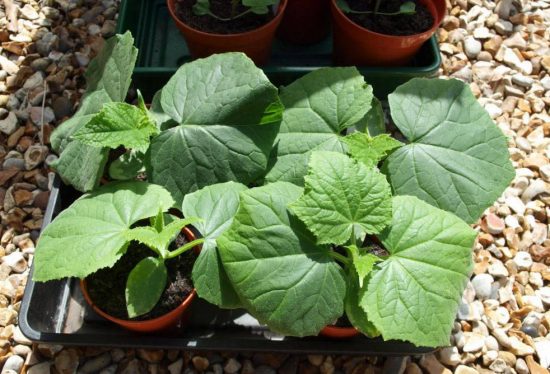

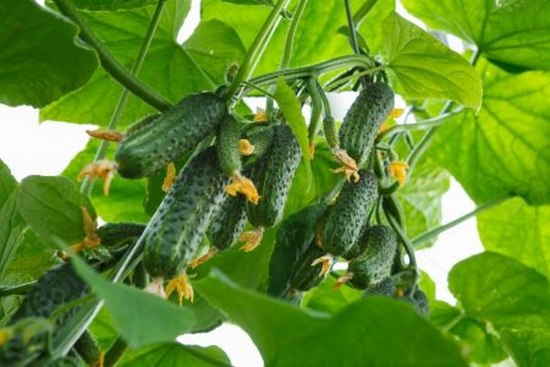
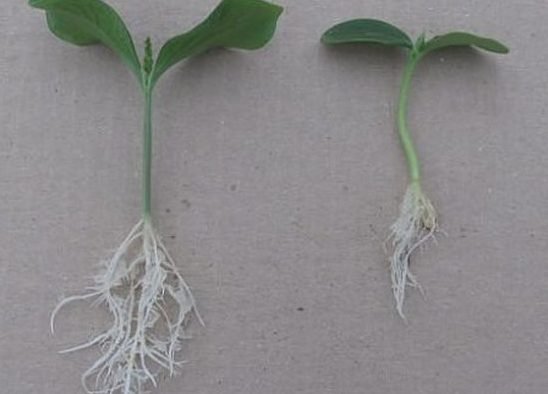
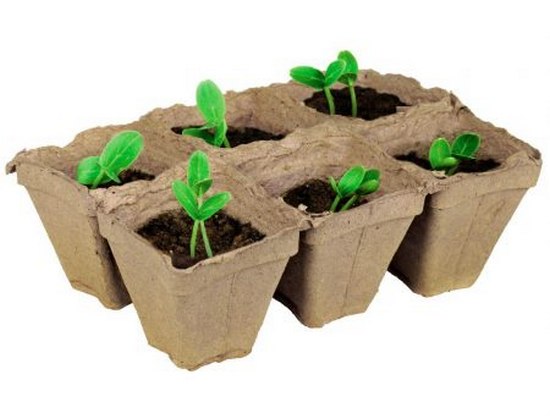
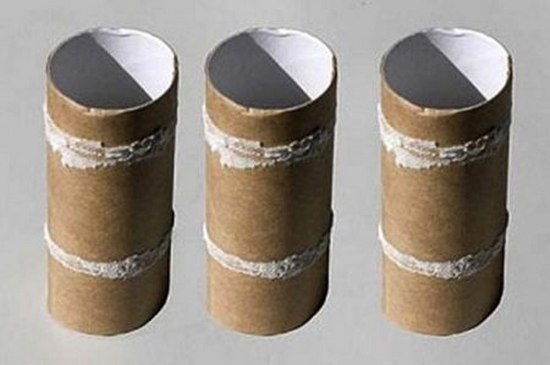

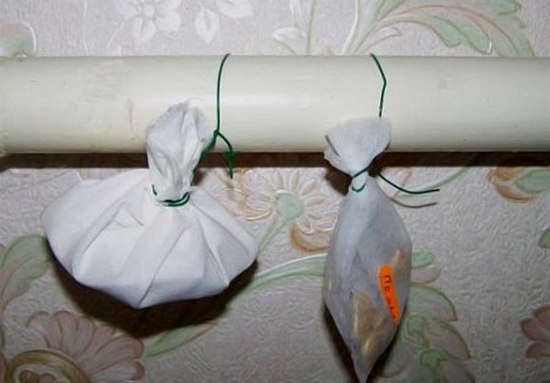
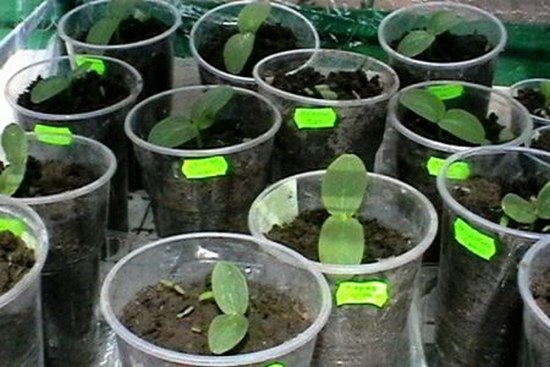

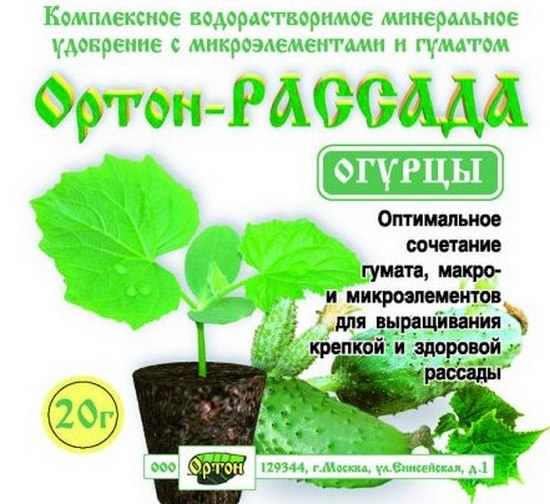
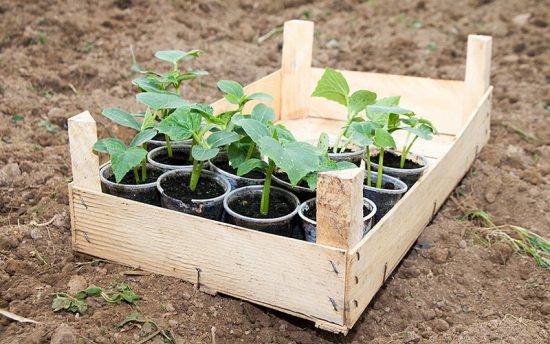
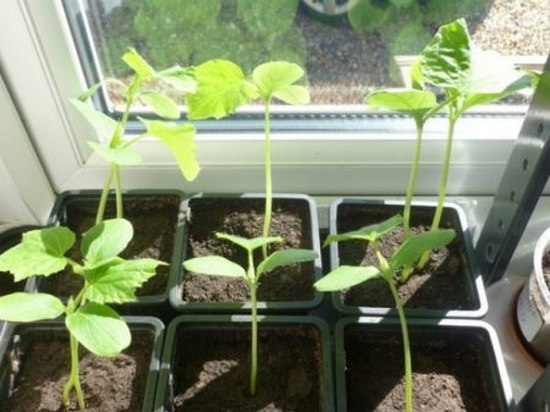

 (22 ratings, average: 4,27 out of 5)
(22 ratings, average: 4,27 out of 5) CUCUMBERS NEVER GET SICK, I'VE BEEN USING ONLY THIS FOR 40 YEARS! I SHARE A SECRET WITH YOU, CUCUMBERS ARE LIKE THE PICTURE!
CUCUMBERS NEVER GET SICK, I'VE BEEN USING ONLY THIS FOR 40 YEARS! I SHARE A SECRET WITH YOU, CUCUMBERS ARE LIKE THE PICTURE! You can dig a bucket of potatoes from each bush. Do you think these are fairy tales? Watch the video
You can dig a bucket of potatoes from each bush. Do you think these are fairy tales? Watch the video
 How our fellow gardeners work in Korea. There is a lot to learn and just fun to watch.
How our fellow gardeners work in Korea. There is a lot to learn and just fun to watch. Eye trainer. The author claims that with daily viewing, vision is restored. They don't charge money for views.
Eye trainer. The author claims that with daily viewing, vision is restored. They don't charge money for views. A 3-ingredient cake recipe in 30 minutes is better than Napoleon. Simple and very tasty.
A 3-ingredient cake recipe in 30 minutes is better than Napoleon. Simple and very tasty. Therapeutic exercises for cervical osteochondrosis. A complete set of exercises.
Therapeutic exercises for cervical osteochondrosis. A complete set of exercises. Which indoor plants match your zodiac sign?
Which indoor plants match your zodiac sign? What about them? Excursion to German dachas.
What about them? Excursion to German dachas.
Have you “seen” how newspaper in the soil quickly gets wet and cucumber roots grow through it? No matter how it is... do not mislead the people / this is a statement of THEORISTS